-
Product Name
ADRM1 antibody
- Documents
-
Description
ADRM1 Rabbit Polyclonal antibody. Positive WB detected in HEK-293 cells, HeLa cells, mouse ovary tissue, mouse testis tissue. Positive IP detected in mouse testis tissue. Positive IF detected in MCF-7 cells. Positive IHC detected in human colon cancer tissue. Positive FC detected in MCF-7 cells. Observed molecular weight by Western-blot: 46kd
-
Tested applications
ELISA, IHC, IF, IP, FC, WB
-
Species reactivity
Human,Mouse,Rat; other species not tested.
-
Alternative names
adhesion regulating molecule 1 antibody; ADRM1 antibody; ARM 1 antibody; ARM1 antibody; GP110 antibody; hRpn13 antibody; Rpn13 antibody; Rpn13 homolog antibody
-
Isotype
Rabbit IgG
-
Preparation
This antibody was obtained by immunization of ADRM1 recombinant protein (Accession Number: NM_175573). Purification method: Antigen affinity purified.
-
Clonality
Polyclonal
-
Formulation
PBS with 0.1% sodium azide and 50% glycerol pH 7.3.
-
Storage instructions
Store at -20℃. DO NOT ALIQUOT
-
Applications
Recommended Dilution:
WB: 1:500-1:5000
IP: 1:200-1:2000
IHC: 1:20-1:200
IF: 1:20-1:200
-
Validations
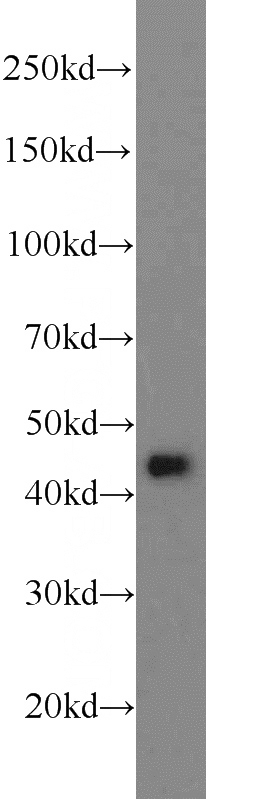
HEK-293 cells were subjected to SDS PAGE followed by western blot with Catalog No:107894(ADRM1 antibody) at dilution of 1:1000
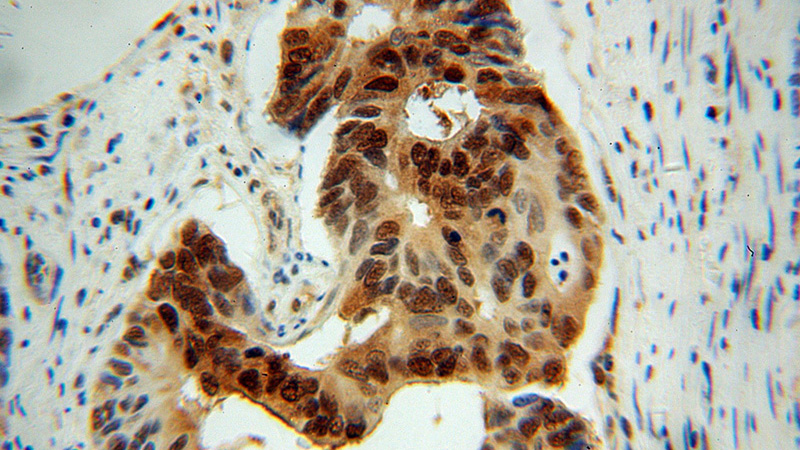
Immunohistochemical of paraffin-embedded human colon cancer using Catalog No:107894(ADRM1 antibody) at dilution of 1:100 (under 40x lens)
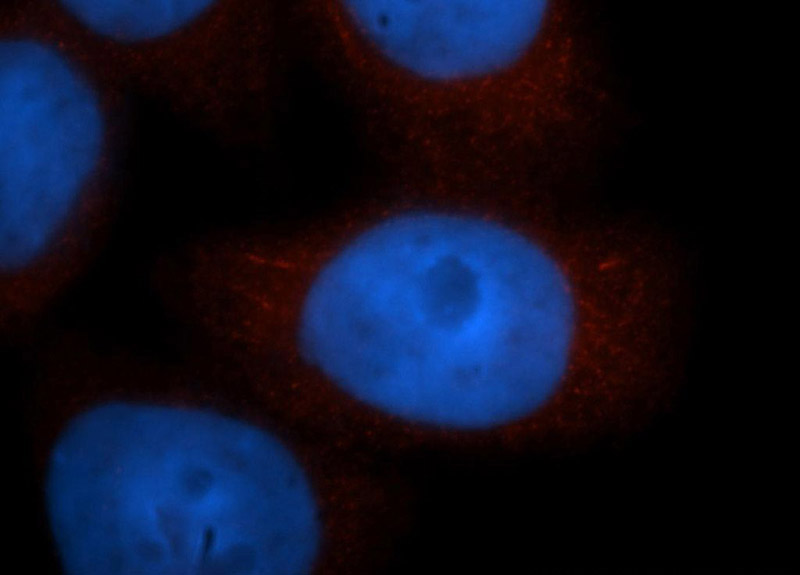
Immunofluorescent analysis of MCF-7 cells, using ADRM1 antibody Catalog No:107894 at 1:50 dilution and Rhodamine-labeled goat anti-rabbit IgG (red). Blue pseudocolor = DAPI (fluorescent DNA dye).
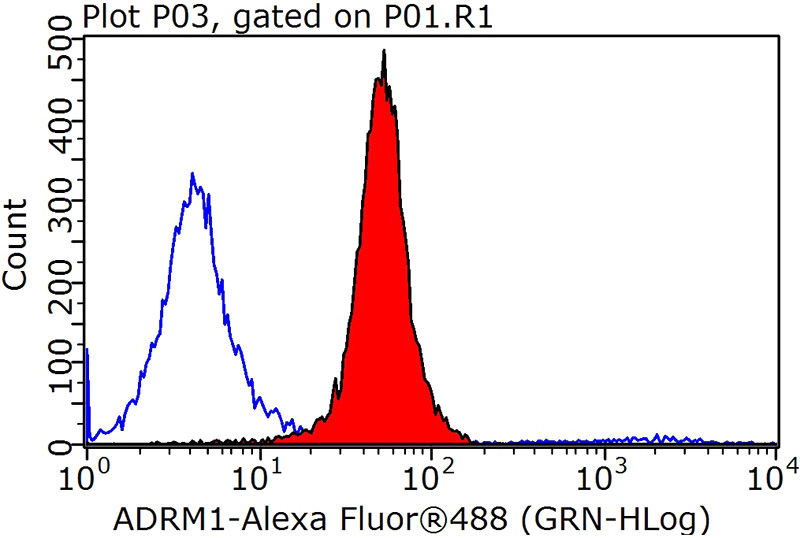
1X10^6 MCF-7 cells were stained with 0.2ug ADRM1 antibody (Catalog No:107894, red) and control antibody (blue). Fixed with 90% MeOH blocked with 3% BSA (30 min). Alexa Fluor 488-congugated AffiniPure Goat Anti-Rabbit IgG(H+L) with dilution 1:1000.
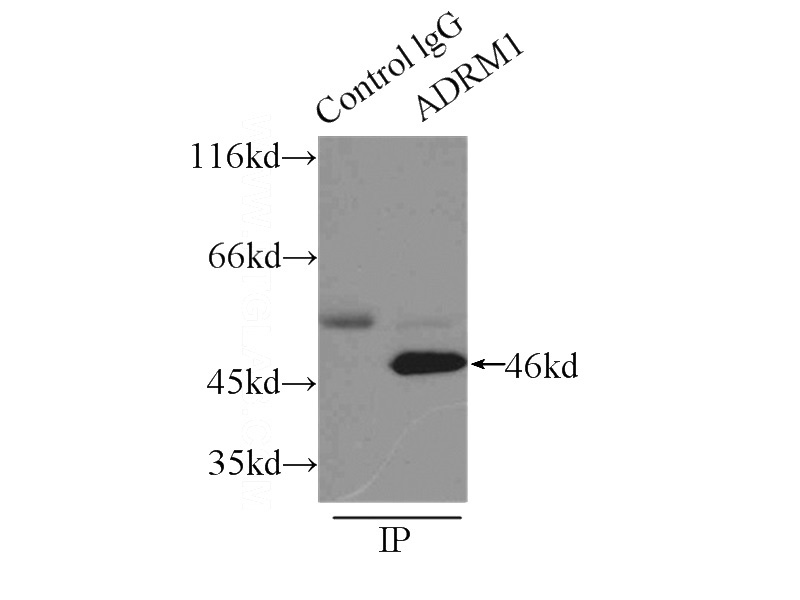
IP Result of anti-ADRM1 (IP:Catalog No:107894, 3ug; Detection:Catalog No:107894 1:500) with mouse testis tissue lysate 8000ug.
-
Background
The 26S proteasome is a key component of the ubiquitin-proteasome system, a process responsible for the majority of cellular protein degradation. hRpn13 (also termed ADRM1 or GP110) is a novel 46-kDa subunit of its 19S regulatory complex. hRpn13 binds directly to the proteasome-associated deubiquitinating enzyme, UCH37, and enhances its isopeptidase activity. Overexpression of hRpn13 promotes the activity of the ubiquitin-proteasome system and modulates the influence of osteoblasts on osteoclasts by controlling the stability of regulatory proteins in osteoblasts.
-
References
- Yang X, Miao X, Wen Y, Hu J, Dai W, Yin B. A possible connection between adhesion regulating molecule 1 overexpression and nuclear factor kappa B activity in hepatocarcinogenesis. Oncology reports. 28(1):283-90. 2012.
- Sparks A, Dayal S, Das J, Robertson P, Menendez S, Saville MK. The degradation of p53 and its major E3 ligase Mdm2 is differentially dependent on the proteasomal ubiquitin receptor S5a. Oncogene. 33(38):4685-96. 2014.
- Ryu H, Gygi SP, Azuma Y, Arnaoutov A, Dasso M. SUMOylation of Psmd1 controls Adrm1 interaction with the proteasome. Cell reports. 7(6):1842-8. 2014.
- Gorrie GH, Fecto F, Radzicki D. Dendritic spinopathy in transgenic mice expressing ALS/dementia-linked mutant UBQLN2. Proceedings of the National Academy of Sciences of the United States of America. 111(40):14524-9. 2014.
- Fejzo MS, Dering J, Ginther C. Comprehensive analysis of 20q13 genes in ovarian cancer identifies ADRM1 as amplification target. Genes, chromosomes & cancer. 47(10):873-83. 2008.
Related Products / Services
Please note: All products are "FOR RESEARCH USE ONLY AND ARE NOT INTENDED FOR DIAGNOSTIC OR THERAPEUTIC USE"
